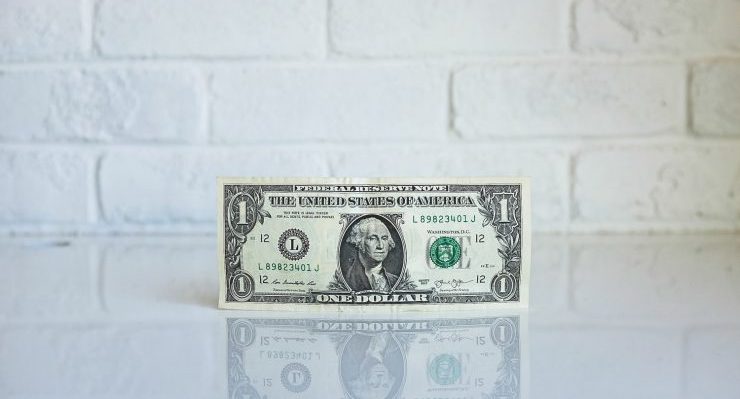
Remember the business tax cut debate and the claims from business, the government, and its media cheerleaders that cutting the already low rate of company tax would be a panacea for every kind of economic ill? And how Donald Trump’s US$1.7 trillion tax cuts were invoked to warn Australia would be left behind, marooned without investment in a global economy where countries fought it out to lure investment with tax cuts?
As we know the only things Trump’s tax cuts sparked were a surge in the US budget deficit (which is now at World War II levels and headed much higher), and record share buybacks: US$806 billion in 2018, according to S&P Global Indices, and a further, record, US$253 billion in the March quarter of this year, with more coming — Alphabet (Google) recently announced a US$25 billion buyback. Corporate profits also jumped sharply — they were up 26% in the June quarter of 2018.
But what about investment? Business investment did rise — according to the US Bureau of Economic Analysis, it was up an annual 13.2% in the third quarter of 2018 and an annual 6.2% in the March quarter of 2019.
Only problem is, investment began surging back at the end of 2016 in the US, with growth reaching 10% in the final quarter of Barack Obama’s presidency. But this year it hit a wall — it fell 5.5% in annual terms in the June quarter.
In fact the quarter on quarter fall of 0.8% was the largest quarterly drop in three and a half years, concentrated in investment in structures (down an annual 10.6%, the biggest annual drop three and a quarter years). Non-residential investment (the key driver in overall investment) fell an annual 0.6% in the quarter, equal to the largest fall since the first quarter of 2016.
So while the share buybacks are continuing, whatever rise in investment the tax cuts did generate, if any, has vanished.
Admittedly the buybacks have been helpful in boosting earnings per share, which in turn have helped boost executive incomes and bonuses in particular, so business executives have been well looked after. And US jobs growth remains solid — though the current employment growth surge began under Obama as well.
That managed to finally stimulate some US wage growth, which is running at 3.1% (it had reached 3.4% earlier this year — which almost feels like real growth, but has since fallen back). In turn, that has helped consumer spending, which in the second quarter was up 4.3% in annual terms from the weak 1.1% rise in the first quarter. In fact it was the strongest annual rise since the first quarter of 2017.
What would Australia’s retailers give for 4.3% annual growth in consumer spending? A lot — though not, obviously, a pay rise to their workers who have endured stagnant wages for years.
Perhaps they and the government and its minions in Treasury — who think wage stagnation is the fault of lazy workers — might look across the Pacific and consider whether a good way to get economic growth up is to increase household incomes and boost consumer spending?









I took the advice of the treasury genius who said we need to tell the boss outright that we want a pay rise and to look for another job if I can get one.
The boss told me to rack off…he has a wife and a girlfriend to keep sweet and 2 kids at Kings college who are pressing him for a couple of 5 series beamers to get to school in.
So I quit work and am looking for another job at higher pay.
Its basic economic common sense for a government to support a living wage, a living wage provides discretionary income, income above the basic cost of living which allows people to spend in local small business, buy cars and houses , clothe themselves and pay for education and health cost, by supporting wage and other income cuts small business cuts its own throat, only the greed and laziness of small business owners blinds them to this basic economic fact, the only beneficiaries of low wages are multi nationals whose customer base is overseas, as incomes drop, small business closes and soon the streets are full of empty shops both small and large, David Jones is a classic example of this, next to go will be car dealerships as people hang onto their old cars, cafes and retaurants, hair salons and beauty shops and mechanical service outlets as people start fixing and servicing their own cars will follow as night follows day, this government is desperately looking for someone/ something to blame for its own mismanagement of the Australian economy, they say its only a retail recession, or its trumps trade war to blame, the fact is, if you give the rich more and more and ordinary people less and less, the only outcome is recession/depression, every financial collapse in history has been caused by the disproprtionist transfer of wealth from the poor to the rich and this one will be no different, greed and the christian conservative class are the bubonic plague of ordinary people and have the same devastation and fatal effects.